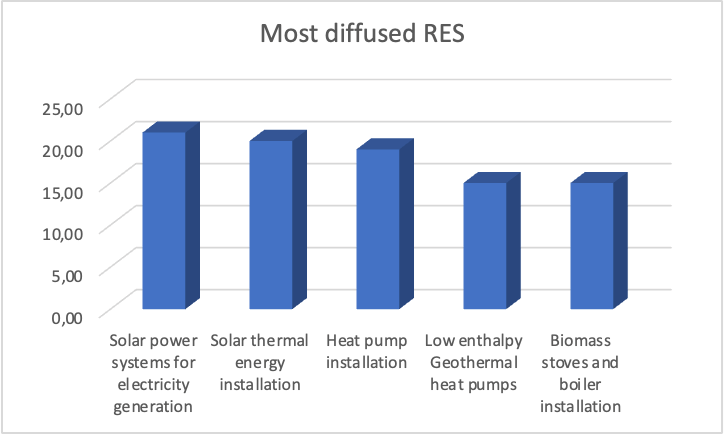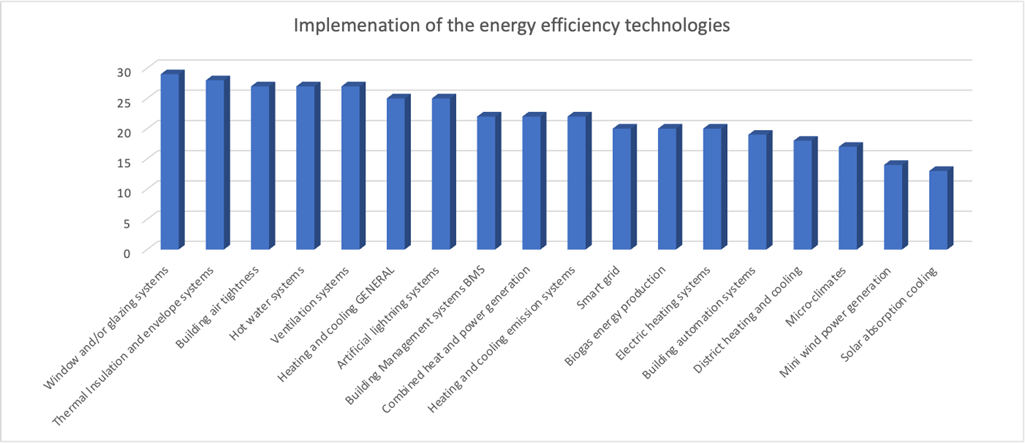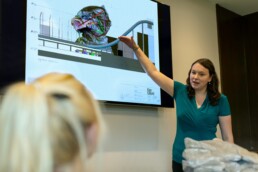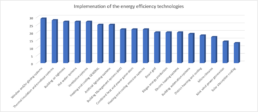Tackling the Lack of Young Professionals and Women in the Construction Industry
The construction industry has historically been, and largely remains, a male-dominated field marked by stark gender disparities. Despite advances in technology, innovation, and workplace safety, women hold only 6.6% of leadership positions in the sector in Italy, compared to 93.4% held by men, according to data from Unioncamere. While female employment in construction has seen modest growth, a significant imbalance persists, particularly in the low number of young professionals choosing careers in this field.

This situation is surprising, given that the construction industry offers a wide range of careers, many in developing technological fields, along with financially rewarding opportunities. With ongoing digital transformation and a growing emphasis on environmental sustainability, the sector has the potential to become more inclusive, accommodating diverse backgrounds, skills, and abilities. So, what barriers prevent the construction industry in Italy from becoming a more modern and inclusive field? And could these challenges have implications beyond Italy’s borders and within the EU?
Earlier this year, a survey from the European Project RES2 was circulated among key Italian stakeholders in the industry to explore perceptions of the gender and youth gap, with the goal of elaborating solutions to address these issues. The findings uncovered a range of stereotypes and negative perceptions surrounding careers in construction, along with several insightful suggestions for addressing these challenges.
A Glimpse into Gender Imbalance in Education and Work
The Paradox of Education and Female Employment in Italy
Data from Italia in Dati in 2022 reveals that while the number of graduates in Italy has increased, the percentage remains below the European average. Only 26.8% of 30-34-year-olds in Italy hold a degree, compared to the European average of 41.6%. Moreover, Italy shows a gender disparity in educational attainment, with the majority of graduates being women—an encouraging trend that paradoxically does not translate into equitable employment outcomes. The proportion of women graduates among the 25-64-year-old demographic is 23.1%, compared to 16.8% for men. Despite higher educational attainment, women in Italy face higher unemployment rates and pay disparities, with youth unemployment (ages 15-24) at a concerning 23.7% in 2022.
European Comparisons and Gender Disparities
In terms of unemployment rates and NEET (Not in Education, Employment, or Training) status for young people (ages 15-29), Italy ranks third in Europe for unemployment and second for NEET rates. Compared to the EU27 and EU28 averages, Italy’s labor market inclusion is notably low, while Sweden has achieved the highest employment rates.
Addressing Mismatches in Education and Employment
One reason for Italy’s elevated unemployment is a mismatch between workforce skills and market needs. The Italian economy has struggled to meet the demand for goods and services, leading to gaps in employment. Career guidance remains insufficient, especially during key educational transitions, resulting in a disconnect between academic preparation and industry needs. While STEM fields (Science, Technology, Engineering, and Mathematics) generally offer higher employment and pay prospects, the humanities remain a popular choice among Italian students, limiting opportunities in a digital world.
As of 2021, 24% of Italian 25-34-year-olds held a STEM degree, with a significant gender gap: 33.7% among men and only 17.6% among women. Meanwhile, in Germany, over 32% of young professionals have scientific qualifications, underscoring Italy’s challenges in aligning with Europe’s digital transformation.
Industry Stereotypes
Perceptions of Masculinity in Construction
According to the RES2 survey, the construction sector remains tethered to entrenched gender stereotypes, where women are often viewed as unsuited for roles in management, planning, and design. These biases stem from a misguided perception that men are more ambitious and better suited to leadership positions. The physically demanding nature of construction work—often involving strength, endurance, and challenging conditions—reinforces the stereotype that construction is inherently a "male domain." Unfortunately, these views discourage women from considering careers in construction and perpetuate resistance to inclusivity among employers.
Poor Working Conditions
Women qualified for office-based roles in construction often face significant challenges in achieving leadership positions due to persistent gender biases, a trend consistent across STEM fields in Italy. For field-based roles, particularly in Southern Italy, the situation is even more dire, with construction sites often perceived as dirty, unsafe, and poorly regulated. Media coverage of accidents and scandals—often linked to corruption—has further tarnished the sector's image. Additionally, market pressures and government policies aimed at cost-cutting have led to diminished safety and quality standards, creating a stagnant work environment resistant to innovation and inclusivity.
These poor working conditions perpetuate stereotypes, as some companies neglect safety and hygiene, assuming that a predominantly male workforce is more tolerant of harsh environments. This dynamic not only excludes women but also reinforces the stereotype of construction as a male-dominated field. Further complicating inclusivity is the lack of support for workers with caregiving responsibilities, stemming from traditional expectations that men will not require family-friendly policies.
Lack of Career Prospects and Innovation
In Southern Italy, the construction sector is often viewed as rigid and stagnant, with limited opportunities for growth. Small, family-run businesses frequently operate informally, reinforcing this perception. Additionally, a lack of government investment in training for skilled trades has led to a decline in essential roles such as electricians and welders. Young professionals may perceive these roles as lacking creativity and innovation—qualities increasingly valued by younger generations. This disconnect reflects a broader gap between young workers' ambitions and the opportunities available within the construction sector.
Recommendations for Industry Change
Collaboration Among Education, Public Administration, and Business Leaders
To tackle the persistence of gender stereotypes and exclusionary practices in construction, a multi-layered approach is necessary. Addressing these issues must start with early education, deconstructing gender stereotypes, and encouraging diverse career interests from a young age. One effective strategy is to eliminate the gender connotations associated with toys, games, and activities for children, allowing for a more gender-neutral perspective.
Collaboration among public administrators, business leaders, and educators is essential to promote cultural shifts that support inclusivity. Building strong partnerships between educational institutions and construction companies can facilitate internships, apprenticeships, and hands-on learning experiences, offering students a broader view of career possibilities within construction. Public events, such as career days at schools and universities, can further emphasize the creative and dynamic nature of construction work.

Promoting Career Pathways through Digital Tools
Enhancing perceptions of the construction industry can also be achieved through promoting career pathways utilizing digital tools. Schools can introduce design software that allows young students to digitally model apartments, showcasing the sector's intellectual and creative dimensions rather than just its manual labor aspects. Building Information Modeling (BIM), a collaborative tool widely used in construction, can serve as a cornerstone of construction education, helping students understand the integration of architectural, structural, and environmental elements.
Advancing Health and Safety
Modernizing the construction workforce requires prioritizing health and safety training. Integrating AI tools for real-time site monitoring and utilizing smart glasses for hands-free inspections can revolutionize safety practices, fostering a safer and more inclusive environment. Students can gain exposure to these technologies through industry events, allowing for hands-on learning and direct interaction with professionals.
Economic and Wage Reforms
To truly modernize the sector, wage reforms are essential. As demands for digital and environmental skills rise, workers should be compensated fairly for their expertise. Sustainable sector growth requires policies that consider workers’ social and economic well-being alongside industry innovation goals.
Conclusion
Addressing the deeply entrenched issues within the construction industry necessitates dismantling outdated stereotypes, improving working conditions, and expanding career prospects for women and young professionals. Schools and educational institutions should actively promote construction career options, while industry leaders must advocate for policy changes that align with workers’ needs.
Ultimately, the goal is to create a construction industry where women and young professionals can thrive—not merely as exceptions in a male-dominated field, but as pioneers of a more inclusive and forward-looking sector. Embracing these changes can pave the way for a construction industry that reflects the diverse talents of its workforce, advancing toward a truly equitable future.
The ARISE platform aims to promote the active participation and upskilling of individuals of all genders and ages in the construction industry. By using the ARISE platform, every professional in the construction sector can enhance their knowledge and skills conveniently online, no matter where they are.
https://www.youtube.com/watch?v=Z5B2k8loEqk&ab_channel=ARISEH2020
Reaching a Sustainable Built Environment: Our Analysis
We just published the Report: “European roadmap: BIM applied to energy performance”.
The report provides inputs to develop a roadmap to achieve the correct development of a workforce ready to face the challenges of climate changes. The report starts recalling the requirements already defined in the European directives dealing with energy performance, the use of renewable energy sources, and digitalisation. Then, starting from the outputs of the previous deliverables, the roadmap summarises the knowledge, the skills and the competences needed both on the demand side and the offer side to obtain more resilient buildings to climate change with a decreased use of natural resources.
The roadmaps intend to ensure that current and future stakeholders interested in increasing the competences in the energy and digital domains, guarantee that existing and future training materials are adequate and continuously adapt to change. The roadmaps start from an in-depth analysis of the status quo in the participating countries.
The roadmaps should allow any company, public administration, and individual to fill the gap of competences and take advantages of all innovative energy and digital technologies.
In all the partner countries there is legislation supporting both the use of renewable energy sources and the improvement of the energy performance. Digitalisation is not always compulsory, but there are many initiatives to increase the competences in this domain starting from the public tenders where the use of BIM is becoming required in many countries. Consequently, we expect a huge future increase in the demand of digital competences needed in all the supply chain.
To provide the basis for the development of national roadmaps we considered a matrix where we suggest the level of knowledge/competence of the different targets for each technology. Digitalisation should be considered an instrument and not a final goal and should be applied by any blue and white collar of the building supply chain during its whole life cycle.
The goals of the directive are the same in every country. However, some countries are a few steps ahead in its implementation. To ensure the achievement of the same level by all, it is essential to promote the implementation of new technologies on both the demand and the offer side.
Based on a survey circulated among the project partners, we can make some interesting assumptions.
There is a strong correlation between the quality of the national VET (Vocational, Educational and Training) and LLL (Life-Long-Learning) systems and the use of technologies related to energy performance in buildings. North European countries developed more reliable training systems, and as a consequence they also make a better use of RES and technologies for energy efficiency. There is a persistent need, in all countries, to facilitate the use of more innovative technologies, which are still rarely taught in formal training.
In the following two diagrams we can observe the level of implementation of the different technologies considering the average of the different countries.


The ARISE platform can provide the support needed to achieve a higher maturity level in any sector and for any target as it is based on micro-competences. Thanks to the platform, the new technologies can be introduced directly by their producers. They can use it as a mean to provide training materials to be able to design, install and maintain new equipment and/or materials that can improve the energy performance of buildings.
The implementation of digitalisation shows that the problem is more related to the lack of a full maturity on the demand side. Designers are usually ready to implement digitalisation as it facilitates their work, but if the demand of public administration and both public and private owners does not increase, it cannot be fully implemented in the supply chain. The consequence is that the owners cannot profit from the benefit of managing all the information linked to their assets in order to decrease the cost of management and maintenance.
In the following diagram we can observe the different levels of maturity as average of the situation in each of the partners’ countries.

If the constructors do not implement the model received by the designers with the information of the products and equipment used and installed, the owner gets only marginal benefit from the BIM model produced by the designer. Therefore, there is a strong need to increase the comprehension of the benefits introduced by the full implementation of BIM in the supply chain. This analysis is also useful for training program developers and providers, providing them with directions on how to profile their programs.
In this case too, the ARISE platform can be beneficial as the European chapters of buildingSMART international are working for an agreement aimed at increasing awareness of the benefits of BIM along all the supply chain using the training materials developed for the individual qualifications available for free to everyone.
For more information, download the Report here.




